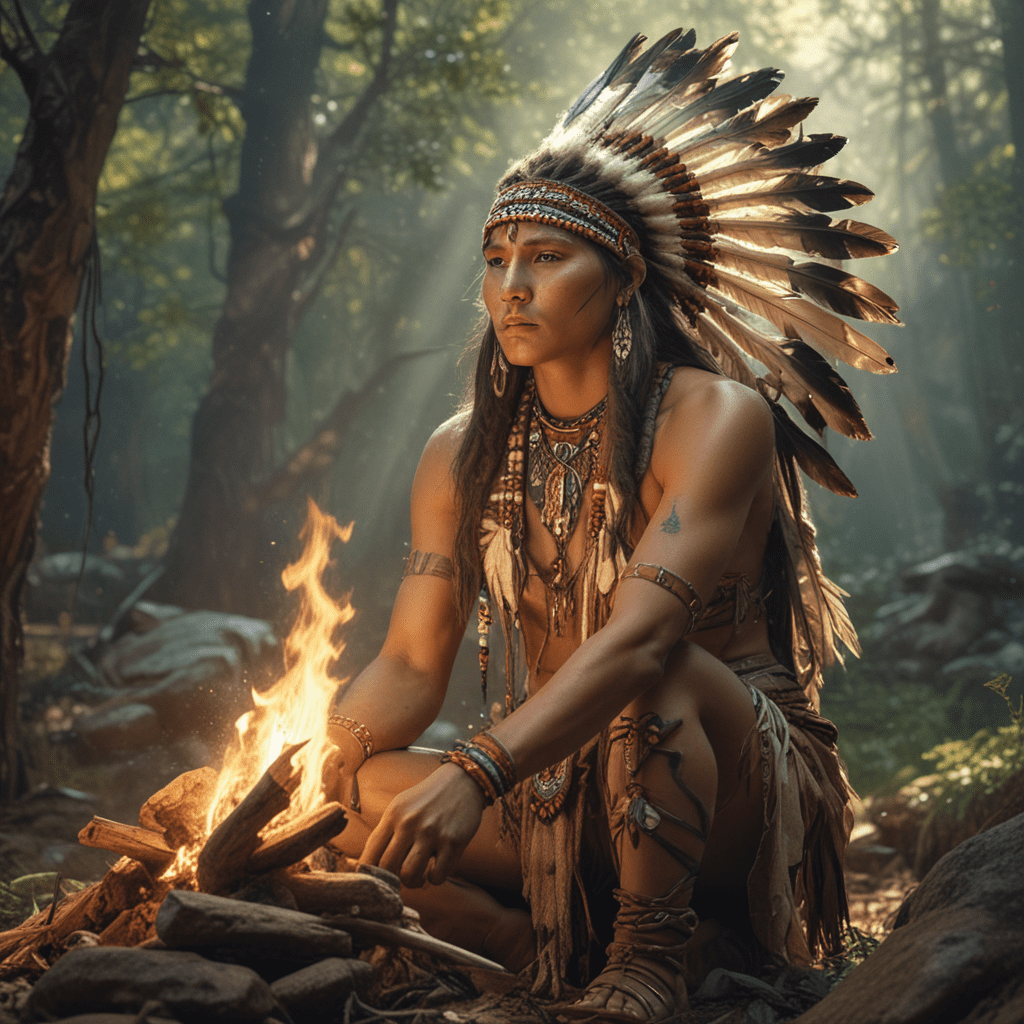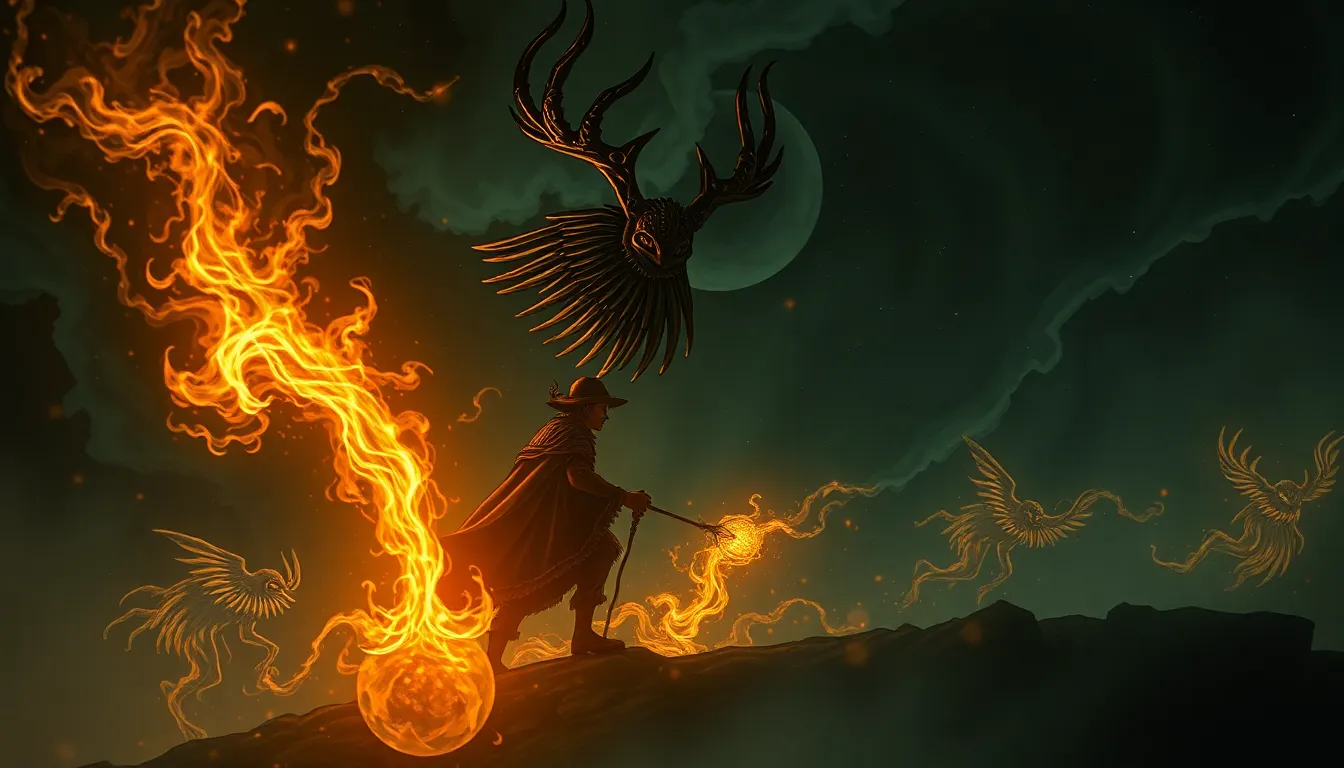The Mythical Hyeonmu and Ungnyeo in Korean Legend
Introduction: The Guardians of the North
In the rich tapestry of Korean mythology, the figures of Hyeonmu and Ungnyeo stand as powerful guardians of the North, embodying the forces of nature and the mysteries of the unknown. These beings, steeped in ancient folklore and symbolic meaning, have captivated generations of Koreans for centuries. Hyeonmu, a creature of both strength and wisdom, is often depicted as a black tortoise, representing stability, longevity, and protection. Ungnyeo, a mysterious being of both beauty and danger, is known as a snake-woman, embodying the transformative power of nature and the enigma of its depths. Together, their stories weave a narrative of power, mystery, and the unwavering strength of the human spirit in the face of the unknown.
Hyeonmu: The Black Tortoise of the North
In Korean mythology, Hyeonmu is one of the four mythical creatures, each representing a cardinal direction. Hyeonmu, the black tortoise, embodies the North. While Hyeonmu's roots can be traced back to ancient Chinese mythology, where it represents the element of water, the Korean interpretation of Hyeonmu takes on unique cultural significance.
In Korean folklore, Hyeonmu is not only a powerful guardian of the North but also a symbol of longevity, stability, and protection. He is often depicted as a large black tortoise carrying a mystical symbol called the "taegeuk." This symbol, representing the balance of yin and yang, further emphasizes Hyeonmu's role as a protector of harmony and order in the universe. Hyeonmu is believed to possess immense strength and wisdom, safeguarding the North from evil spirits and ensuring the safety of those who dwell within its realm.
Ungnyeo: The Mysterious Snake-Woman
Unlike Hyeonmu, Ungnyeo's presence in Korean mythology is shrouded in mystery and intrigue. Often depicted as a half-human, half-snake creature, she is known for her ability to transform and her connection to the natural world. Ungnyeo’s origins are shrouded in legend, with tales suggesting she is the embodiment of a powerful spirit or a spirit that has taken on the form of a snake-woman.
Ungnyeo is said to possess extraordinary powers, including the ability to change her appearance at will, often taking on the form of a beautiful woman. In some stories, she appears as a benevolent being, aiding those in need and protecting nature’s beauty. In others, she emerges as a source of danger and deception, tempting humans with her allure before revealing her true form. Her ambiguous nature adds complexity and depth to her representation in Korean mythology.
The Relationship Between Hyeonmu and Ungnyeo
The relationship between Hyeonmu and Ungnyeo in Korean mythology is a subject of much debate and interpretation. Some scholars argue that they are separate entities, representing distinct aspects of the natural world. Others believe that they are interconnected, with Ungnyeo perhaps representing a transformation or a more potent aspect of Hyeonmu's power.
One possible interpretation is that Hyeonmu and Ungnyeo symbolize a symbiotic relationship, with Hyeonmu representing the stability and order of the natural world while Ungnyeo embodies its transformative and unpredictable nature. Another interpretation suggests that Ungnyeo could signify a potential for change or even a threat to Hyeonmu's stability, reflecting the dynamic nature of the relationship between order and chaos in the universe.
Hyeonmu and Ungnyeo in Korean Art and Literature
The enduring legacy of Hyeonmu and Ungnyeo is evident in their presence in Korean art and literature. Hyeonmu is often depicted in traditional paintings and sculptures, frequently portrayed as a majestic black tortoise adorned with intricate patterns and symbols. He also appears in various Korean folktales and literary works, often serving as a symbol of strength, wisdom, and protection.
Ungnyeo, due to her enigmatic nature, is less frequently depicted in art or literature. However, she appears in select stories and poems, often as a creature of both beauty and danger, representing nature's mysterious and untamed essence. Despite their differing roles, both Hyeonmu and Ungnyeo's presence in Korean art and literature underscores their deep connection to Korean culture and their enduring influence on the nation's creative expression.
Theories on the Origins of the Hyeonmu and Ungnyeo Myth
The origins of the Hyeonmu and Ungnyeo myth remain a subject of scholarly debate. Several theories attempt to explain the emergence of these figures in Korean folklore.
Possible Connections to Shamanistic Practices
One prominent theory suggests that the Hyeonmu and Ungnyeo myth has roots in ancient shamanistic practices prevalent in Korea. Shamanism, a traditional belief system that emphasizes communication with spirits, often involves the worship of nature and its powerful forces. The embodiment of these forces in the form of Hyeonmu and Ungnyeo could have been a way for early Korean communities to understand and appease the forces of nature.
Influence of Buddhism and Taoism
Another theory points to the influence of Buddhism and Taoism on the development of the Hyeonmu and Ungnyeo myth. Buddhist and Taoist philosophies often emphasize the interconnectedness of all things and the importance of harmony with nature. The concept of the four guardian deities, including Hyeonmu, might have been influenced by Buddhist concepts of the four celestial kings or the Taoist concept of the Four Symbols, each representing a cardinal direction. The figure of Ungnyeo, with her transformative powers and connection to the natural world, could reflect Taoist ideas of the yin and yang, the balance of opposing forces in the universe.
Reflections of Natural Phenomena in Korea
The Hyeonmu and Ungnyeo myth could also be seen as a reflection of natural phenomena observed in Korea. The presence of the black tortoise, which represents stability and longevity, reflects the importance of the turtle in Korean culture. The turtle, often seen as a symbol of longevity and wisdom, is frequently featured in Korean folklore and art. The snake-woman Ungnyeo, on the other hand, could be a way to understand and symbolize the power and mystery of snakes, often viewed as both dangerous and sacred in many cultures.
Hyeonmu and Ungnyeo in the Modern World
Despite their origins in ancient Korean folklore, Hyeonmu and Ungnyeo continue to resonate with modern audiences. Their enduring presence in contemporary interpretations of myth and their emergence in popular culture reflect their ongoing relevance to Korean identity and their ability to inspire creative expression.
Contemporary Interpretations of the Myth
Modern scholars and artists continue to explore the Hyeonmu and Ungnyeo myth, reinterpreting their stories and symbolism in light of contemporary concerns. These reinterpretations often incorporate modern themes such as environmentalism, social justice, and the search for meaning in a rapidly changing world.
Hyeonmu and Ungnyeo in Popular Culture
Hyeonmu and Ungnyeo have also found their way into popular culture, appearing in various forms of entertainment, including movies, television shows, and video games. Their presence in these mediums often serves to evoke a sense of mystery, power, and the connection to Korean cultural heritage.
Their Relevance to Modern Korean Identity
The enduring relevance of the Hyeonmu and Ungnyeo myth to modern Korean identity is a testament to their ability to bridge the past and present. They offer a sense of continuity and belonging, reminding Koreans of their rich cultural heritage and their connection to the natural world. Their stories provide a framework for understanding the challenges and uncertainties of the modern world while offering a sense of hope and resilience.
The Significance of Hyeonmu and Ungnyeo
The enduring popularity of the Hyeonmu and Ungnyeo myth is a clear indication of their cultural significance. These mythical creatures embody deep symbolic meaning, reflecting core values and beliefs central to Korean culture.
Symbolism of Power and Protection
Hyeonmu, with his strength and wisdom, embodies the power and protection of the natural world. He represents the stability and security that comes from being in harmony with nature's forces. Ungnyeo, despite her ambiguous nature, also possesses a powerful presence, embodying the transformative power of nature and its ability both to create and destroy.
Representation of Nature’s Majesty and Mystery
Both Hyeonmu and Ungnyeo represent the majesty and mystery of the natural world. They remind us of the awe-inspiring power of nature and the endless wonders it holds. Their tales encourage us to respect nature and to recognize our connection to it.
Connection to Korean Identity and Cultural Heritage
The Hyeonmu and Ungnyeo myth is deeply intertwined with Korean identity and cultural heritage. They offer a sense of continuity and belonging, connecting generations of Koreans through shared stories and beliefs. Their enduring presence in Korean art, literature, and popular culture is a testament to their lasting influence on the nation's cultural landscape.
Conclusion: The Enduring Legacy of Hyeonmu and Ungnyeo
The mythical figures of Hyeonmu and Ungnyeo stand as powerful embodiments of nature's strength and the mysteries of the unknown in Korean legend. Their stories continue to captivate imaginations, reminding us of the enduring power of myth to offer insights into the human condition and the forces that shape our world. These ancient tales, steeped in symbolism and cultural significance, serve as a link between past and present, reminding us of the enduring power of Korean culture and its ability to inspire awe, wonder, and a sense of belonging.
FAQ
**Q: What is the difference between Hyeonmu and Ungnyeo?**
A: Hyeonmu is a mythical black tortoise that represents stability, longevity, and protection in Korean mythology. Ungnyeo is a mysterious snake-woman who embodies the transformative power of nature and the enigma of its depths.
Q: Where do Hyeonmu and Ungnyeo appear in Korean culture?
A: Hyeonmu and Ungnyeo appear in traditional Korean art, literature, and popular culture. They are featured in paintings, sculptures, folktales, and modern media.
Q: What is the significance of Hyeonmu and Ungnyeo in Korean mythology?
A: Hyeonmu and Ungnyeo embody important aspects of Korean cultural values and beliefs. They represent nature's power, mystery, and transformation, and they serve as symbols of strength, protection, and the interconnectedness of all things.
Q: What are some theories about the origins of the Hyeonmu and Ungnyeo myth?
A: Some theories suggest that the myth originated from ancient shamanistic practices, Buddhist and Taoist influences, or reflections of natural phenomena observed in Korea.
Q: How are Hyeonmu and Ungnyeo relevant to modern Korean identity?
A: The enduring popularity of Hyeonmu and Ungnyeo in modern times reflects their ongoing relevance to Korean identity. They offer a sense of continuity and belonging, reminding Koreans of their rich cultural heritage and their connection to the natural world.
Q: What is the connection between Hyeonmu and Ungnyeo?
A: The relationship between Hyeonmu and Ungnyeo is a subject of debate. Some scholars argue that they are separate entities, while others believe that they are interconnected, with Ungnyeo perhaps representing a transformation or a more potent aspect of Hyeonmu's power.



